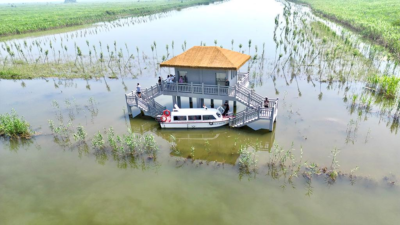
BirdLife International’s innovative Global Flyways project protects bird habitat through full migration and lifecycle. This approach is a conservation game-changer. Here’s why.
Migration is one of the most extraordinary and extreme feats in the natural world, and birds take this to unparalleled levels. These incredible travelers cross multiple borders during their migrations, relying on safe and reliable stopovers for rest and nourishment. Astonishingly, many shorebirds fly tens of thousands of miles each year—some nearly spanning pole to pole—often over vast stretches of open water.
Traditionally, efforts to make migrations safer for birds have been localized or limited to cooperation between neighboring countries. While this has created reliable stopovers in some regions, the lack of continuity across the full migratory route poses a significant threat. Birds often arrive at stopovers that have disappeared or degraded, leaving them without the vital resources they need to survive their journey.
BirdLife International is addressing this challenge with a groundbreaking approach: the creation of the first regional initiative in its new Global Flyways portfolio through responsible investments by the Asian Development Bank. This innovative project unites countries along entire migratory flyways, focusing on preserving and restoring critical stopover habitats. The inaugural project is the restoration of the South Dongting wetland in China, a vital site in the vast East Asian-Australasian Flyway (EAAF), and just one of 150 initiatives planned along this “bird superhighway.”
Why does this matter? Protecting and restoring stopovers—many of which are lost to or earmarked for development or industry—ensures migrating birds have the resources they need for survival. These efforts also benefit local communities who rely on these lands for their livelihoods. What’s good for birds is good for us: by safeguarding these habitats along migratory routes, we not only secure the future of these remarkable species but also enhance ecological and economic sustainability for people.
For more info on the ADB’s involvement see this article.